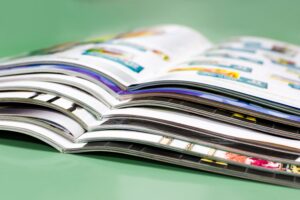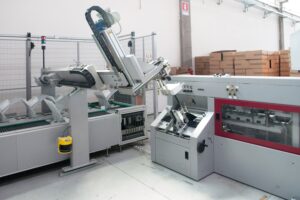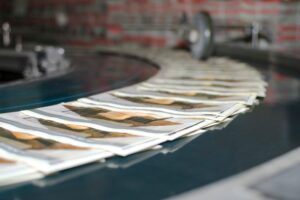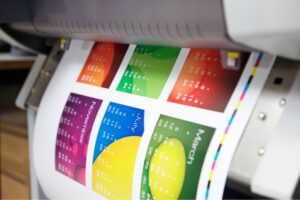Boost Your Brand With Custom Printing: 5 Creative Ideas For Printed Marketing Materials
8 min read
In today’s competitive business landscape, standing out from the crowd is essential for success. How can you make your brand memorable and leave a lasting impression on potential customers? The answer lies in custom printing. By incorporating unique and creative ideas into your printed marketing materials, you can elevate your brand and make it truly unforgettable.
In the age of digital marketing, it’s easy to overlook the power of printed materials. However, custom printing allows you to add a personal touch to your marketing efforts and create a tangible connection with your audience. From business cards to brochures, there are countless opportunities to showcase your brand’s creativity and individuality.
If you’re looking to boost your brand and make a lasting impact, it’s time to explore the world of custom printing. In this article, we will explore five creative ideas for printed marketing materials that will help your brand stand out from the competition and leave a lasting impression on your target audience. Get ready to take your marketing game to the next level with these innovative printing ideas.
What are Printed Marketing Materials?
Printed marketing materials are tangible promotional items that are physically distributed or displayed to potential customers. These materials are designed to communicate information about a business, product, or service in a visually appealing and engaging way. Printed marketing materials can encompass a wide range of items, including brochures, flyers, business cards, direct mail pieces, promotional posters, and more. These materials serve as a bridge between businesses and their target audience, providing a physical touchpoint that leaves a lasting impression on potential customers.
In an increasingly digital world, printed marketing materials still hold value as they offer a tactile experience, allowing recipients to physically interact with and remember the information provided. They can be used to convey a brand’s message, showcase products or services, promote special offers or discounts, and ultimately drive customer engagement and generate leads. With careful design and strategy, printed marketing materials have the potential to leave a lasting impact and create desired outcomes for businesses.
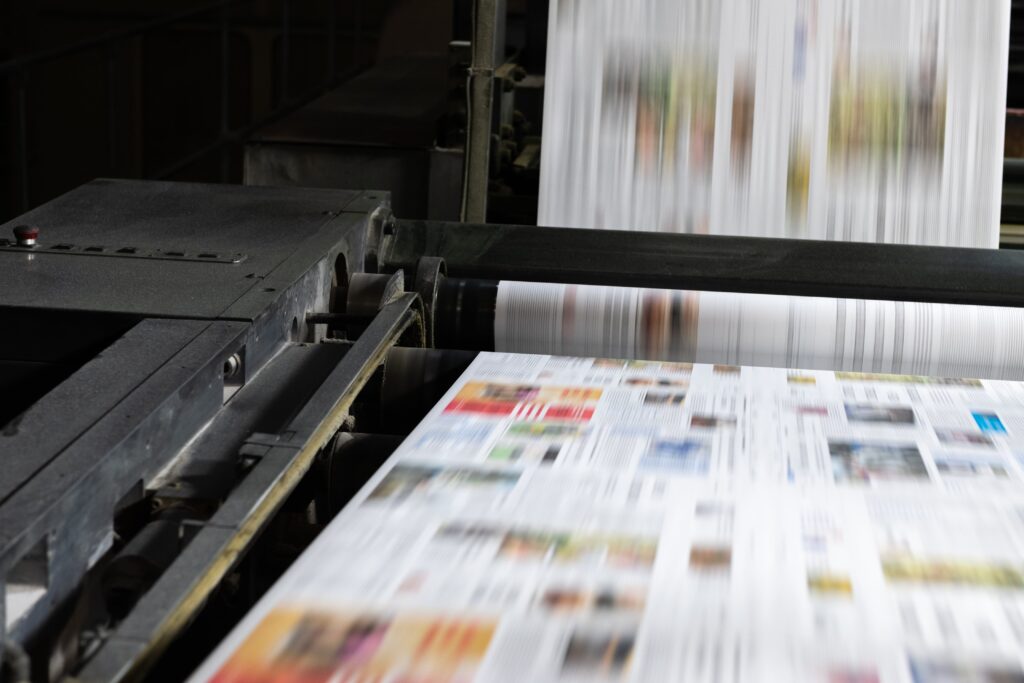
Why is Custom Printing Important for Your Brand?
Custom printing is essential for a brand as it plays a crucial role in effectively communicating a service or product to potential customers. By incorporating custom printing materials such as brochures, flyers, business cards, and packaging, a brand can effectively convey its message, values, and offerings to its target audience.
Firstly, custom printing materials help in communicating a service or product to potential customers. A visually appealing and well-designed print material can capture the attention of customers and provide them with vital information about the brand, its products or services, and any promotional offers or discounts. It acts as a tangible representation of the brand, allowing customers to understand what it has to offer and make informed decisions.
Secondly, custom printing materials play a significant role in keeping a business in clients’ minds. By providing customers with well-designed and impactful printed materials, a brand can leave a lasting impression on their minds. Whenever they see or use those materials, it serves as a constant reminder of the brand and its products or services. This helps in building customer loyalty and can potentially lead to repeat business or referrals.
Lastly, custom printing materials reflect the product, service, and organization. The design, color scheme, and overall aesthetics of printed materials can showcase the brand’s identity, professionalism, and attention to detail. This reflection helps in establishing a positive image in the minds of potential customers and creates a sense of trust and credibility.
Types of Printed Marketing Materials
Printed marketing materials are essential tools for businesses to promote their brand and communicate with their target audience. They include brochures, flyers, business cards, posters, and banners, each serving a specific purpose and playing a vital role in marketing efforts.
Brochures are informative booklets that provide detailed information about a brand, product, or service. They are ideal for showcasing a range of offerings and can be distributed at trade shows or events, or left in display areas for potential customers to take away. Flyers, on the other hand, are single-page advertisements that are primarily used for short-term promotions or events. Their purpose is to quickly grab attention and communicate relevant information in a concise format.
Business cards serve as a personal introduction to a brand. They contain contact details and are exchanged during networking events, making them crucial for creating lasting connections. Posters, with their larger formats, are attention-grabbing displays that can be placed in strategic locations to raise brand awareness or promote special offers. Banners are similar to posters but are typically larger, making them suitable for events or storefronts to generate interest and attract larger audiences.
Regardless of the type, printed marketing materials contribute to brand recognition and act as tangible reminders for customers. By being eye-catching, informative, and well-designed, these materials effectively communicate messages, enhance brand image, and drive sales.
Design Elements to Consider When Creating Your Print Materials
When it comes to creating printed materials for your business, it is important to consider various design elements that can make a significant impact on the overall effectiveness of your marketing efforts. The design elements you choose will play a vital role in attracting attention, conveying your message, and leaving a lasting impression on your target audience. From color schemes and typography to layout and imagery, each design element has the power to enhance or undermine your print materials. By carefully considering these elements and how they work together, you can create visually appealing and impactful print materials that effectively communicate your brand’s message and engage your audience.
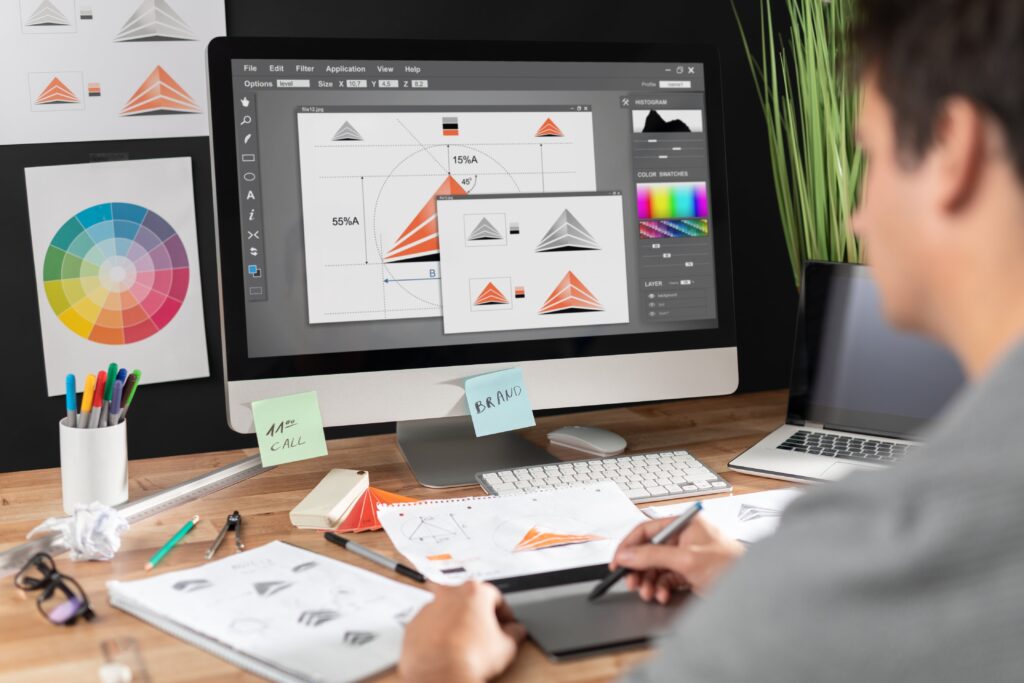
Layout
The document is laid out in a clear and organized manner, with distinct sections and headings that follow a hierarchical structure. The headings are formatted to indicate different levels of importance and subordination.
At the top of the document, there is a title or cover page, which typically includes the document’s title, author’s name, and related information. This page sets the tone and provides a brief introduction to the document.
Following the title page, there is typically a table of contents that lists the different sections and headings. This serves as a helpful navigation tool for readers to easily locate specific information within the document.
Each section is identified by a heading, which is usually displayed in a larger font size and often bold or underlined to make it stand out. The sections are numbered and arranged hierarchically, with primary sections indicated by Arabic numerals (e.g., 1, 2, 3) and subsections represented by a combination of numbers and letters (e.g., 1.1, 1.2, 2.1).
Font size and spacing may vary depending on the document’s style guide or formatting requirements. However, it is common to use 12-point font for the body text, with single or 1.5 line spacing. Headings are often set in a larger font size, such as 14 or 16 points, to differentiate them from the main text.
Indentation is commonly used to indicate the hierarchical structure of headings. Higher-level headings, such as main sections, are typically left aligned, while lower-level headings may be indented to the right to signify subordination.
Color Scheme
Color scheme is a crucial element in the creation of visually appealing and effective marketing materials. It refers to the selection and use of colors to create a harmonious and aesthetically pleasing visual composition. The right color scheme can greatly impact how a brand message is conveyed and how it is perceived by consumers.
When used effectively, color scheme can attract attention and make marketing materials visually appealing. Colors have the power to evoke emotions and convey messages, thus influencing consumer perception. For example, warm colors like red and orange can be used to create a sense of urgency or excitement, while cool colors like blue and green can convey a sense of calmness or trustworthiness. By strategically choosing colors that align with the brand’s personality and target audience, marketers can create a strong visual identity that resonates with consumers.
Furthermore, color scheme plays a vital role in helping consumers understand and remember the brand message. Consistency in color scheme across different marketing materials, such as ads, logos, and packaging, can enhance brand recognition and recall. By using the same set of colors, marketers can create a cohesive brand image and reinforce their message in the minds of consumers.
Fonts
When it comes to marketing materials, choosing the right font is crucial. The font you select should align with your brand’s personality and be easy to read. This is because fonts play a significant role in attracting and maintaining customers’ attention.
There are several fonts that are highly recommended for use in marketing materials. One such font is Times New Roman. It is a classic and timeless font that exudes elegance and professionalism. It is often used in formal marketing materials, such as reports and business documents. Times New Roman is known for its readability, making it an excellent choice when you want to convey a message clearly and effectively.
Another popular font for marketing materials is Helvetica. This font is modern, clean, and versatile. It is commonly used in various industries due to its simplicity and legibility. Using Helvetica can give your marketing materials a contemporary and polished look.
Arial is another font that is widely used in marketing materials. It is clean, simple, and easily readable, making it an excellent choice for both print and digital materials. Arial is highly versatile and can be used in a variety of settings, from advertising to website design.
When selecting a font for your marketing materials, it is essential to consider your brand’s personality. The font you choose should align with the image you want to portray and the message you want to convey. Additionally, the font should be easy to read to ensure that your audience can effortlessly absorb the information you provide.
Effective Strategies for Using Printed Marketing Materials
Printed marketing materials have remained a reliable and effective way for businesses to promote their brands and generate awareness. Here are some strategies for using printed marketing materials:
1. Targeted Distribution: Identify the specific target audience and distribute the materials accordingly. This ensures that the marketing message reaches the right people, increasing the chances of generating awareness and interest in the brand.
2. Compelling Design: Invest in visually appealing and professionally designed printed materials. A well-designed brochure, flyer, or business card can catch the recipient’s attention, leaving a lasting impression and making the brand more memorable.
3. Clear and Concise Messaging: Keep the marketing message simple and easy to understand. Use clear and concise language that effectively communicates the brand’s unique selling proposition and value to the customer. This helps in creating awareness and generating interest.
4. Call to Action: Include a clear call to action (CTA) in the printed materials. This can be a discount offer, a website link, or a phone number to create a sense of urgency and encourage potential customers to take action, such as making a purchase.
5. Consistency with Branding: Ensure that the printed materials align with the overall branding strategy of the business. Consistency in terms of colors, fonts, and messaging presents a cohesive and professional image, making the brand more recognizable and memorable.

Conclusion
In conclusion, custom printing is a great way to boost your brand and increase customer loyalty. By taking the time to create unique, creative materials, you can make an impact that lasts. Whether you’re creating flyers, brochures, business cards, or any other type of printed material, there’s always an opportunity to stand out from the competition. With a little bit of creativity and planning, you can create unique materials that will draw attention to your brand and make a lasting impression.

